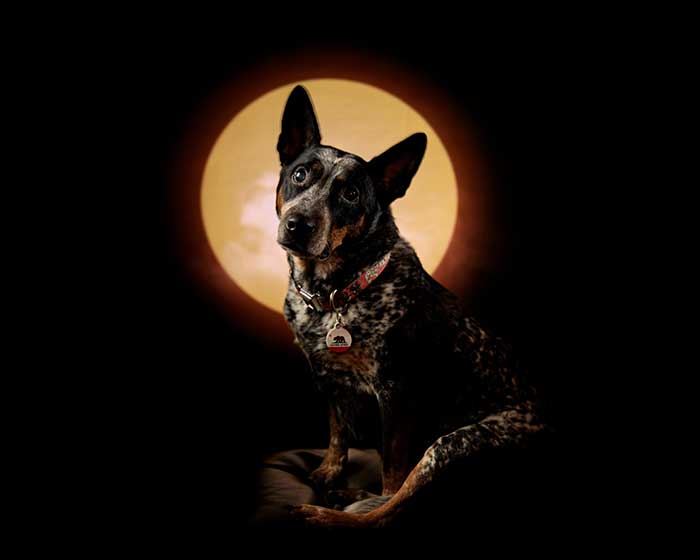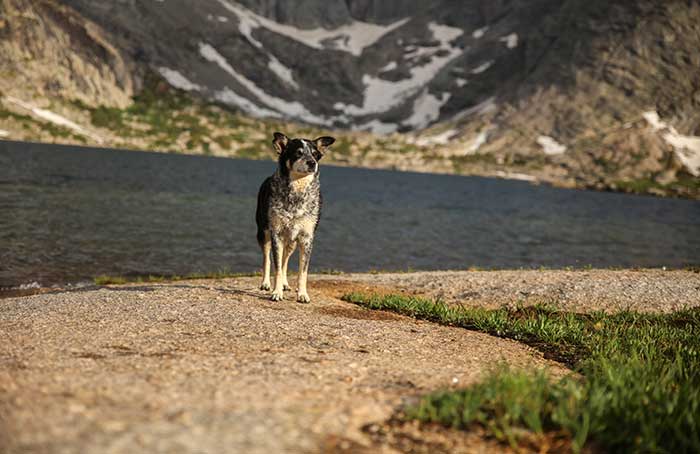In the world of pup genetics, the colors and patterns of a dog’s coat can be an interesting subject. One fascinating question that often becomes apparent is Can two Blue Heelers have a Red Heeler?
Australian cattle dogs are commonly known as Heelers. The Blue Heelers are known for their bluish-gray coats, and the Red Hellers have their signature brownish hair. It is really possible that two Blue Heelers can give birth to a Red Heeler puppy. However, it is rare. Let’s discover this question in the complex world of this beloved breed.
Can Two Blue Heelers have a Red Heeler?

Playful Pawsome Pal.
The Australian cattle dog Heelers are known for their blue or red-dotted coat color. The coat color of a Blue Heeler comes from their genetics. Actually, a pair of genes responsible for coat color are the B gene (black or brown) and the D gene (dilution).
When two Blue Heelers mate, they can birth puppies with a range of coat colors. Like blue, red, or even a combination of both colors. Because the coat color of the babies came from a combination of genes from both parents.
Blue Heeler’s “blue” color is actually a black coat with the dilution gene at work, giving it a bluish effect. Blue Heelers can carry the red coat gene, even if they themselves have only a blue coat.
If both Blue Heelers carry the red gene (genotype BB), then there is a chance that their child could have a red coat. If one or both parents don’t carry the red gene (genotype BB or Bb), then Red Heelers would not be possible from their birth.
So, the probability of having a Red Heeler totally depends on the genetics of the Blue Heeler parent dogs and the combination of genes they pass on to their child.
Coat color genetics

Breed Perfection Personified
Coat color genetics in dogs is an interesting and complex subject. To discover this topic, we must explore the basics of coat color genetics. Coat color in dogs is fixed by various genes, each of which contributes to the final color.
For Blue healers, the blue colors are a result of a gene called “dilution”. To have a blue coat, a dog must have two copies of this dilution gene, one from each parent. If both parents are Blue Heelers, they will only process the dilution gene, and they can only pass it on to their child.
The birth of a Red Heeler from two Blue Heelers is doubtful, but not impossible. The Red Heeler coat color is connected with a different gene called “eumelanin”, which produces black colors. If both Blue Heeler parents somehow carry this eumelanin gene, they could have a Red Heeler if they pass this gene on to their child.
Blue Heelers typically don’t carry the eumelanin gene. It’s a rare case in the genetic sector for two Blue Heelers to produce a Red Heeler. It’s theoretically possible, but the possibility is extremely low.
However, having knowledge about coat color genetics is essential for breeders and dog owners. Because it allowed them to make informed breeding choices and appreciate the genetic differences that make each and every dog unique.
Blue Heeler genetics

Smart and Spirited
The Australian cattle dogs, Blue Heelers, are known for their herding abilities and fascinating blue coats. Their genetics play the main role in shaping their unique characteristics.
The blue coat of the Blue Heelers is a result of their black color gene. Their hard work ethic and intelligence are also because of their genetics.
Blue Heelers’ other remarkable quality is their strong build. They have strong bones and compact bodies, making them agile and resilient herding dogs.
Health-wise, responsible breeding practices can reduce the risk of genetic disorders. For example, hip dysplasia and stone-deaf can be more common in this bread.
Understanding Blue Heeler’s genetics is necessary for breeders to maintain the breed’s morality and health while producing dogs with the intelligence that makes them hard-working and companion animals.
Red Heeler genetics
Red Heelers, also known as the Australian cattle dog, are a remarkable breed known for their intelligence, cleverness, and herding aptitude. Red Heelers have a unique genetic history that explains their exceptional working abilities.
The breed’s genetic heritage can be discovered back to the 19th century when early European settlers in Australia looked for a cattle herding dog capable of bearing up against the harsh Australian climate.
They connect their European herding breeds with the native Australian Dingo, resulting in a powerfully built and hard-working breed with strong genetic differences.
One of the most fantastic features of Red Heelers is their visible coat coloration. Usually, they have a red or blue speckled coat for the “ticking” gene, which gives their coat a characteristic look. Their strong herding instinct comes from their genetics.
Overall, the red Heeler’s genetic makeup is a demonstration of the breed’s flexibility, intelligence, and strong work ethic, making them outstanding working dogs and loyal companions for you.
Possibility of two Blue Heelers having a Red Heeler
The question of whether two Blue Heelers may create a Red Heeler is a matter of interest among dog lovers. Blue Heelers so named because of their stunning blue coat, are commonly connected with the dominant black gene.
Red Heelers, on the other hand, are endowed with a recessive red gene. When two Blue Hellers mate, they can have Red Heeler offspring, although this is extremely rare. This occurs when both parents have the recessive red gene in their genetic composition, allowing it to reappear in their puppies. While the possibilities are narrow, it shows the Australian Cattle Dog breed’s rich genetic variety, making each litter a potential surprise for breeders and dog enthusiasts alike.
Conclusion
In conclusion, the interesting subject “Can two Blue Heelers have a Red Heeler?” falls into the complicated subject of dog genetics. While this is a rare occurrence, it is feasible if both parent dogs have the recessive red gene.
This event highlights the tremendous genetic diversity within the Australian Cattle Dog breed. demonstrating how even seemingly similar breeds may harbor hidden features, making each litter a potential surprise and tribute to nature’s genetic game.
Incoming Search: can 2 blue heelers make a red heeler
Related Posts: